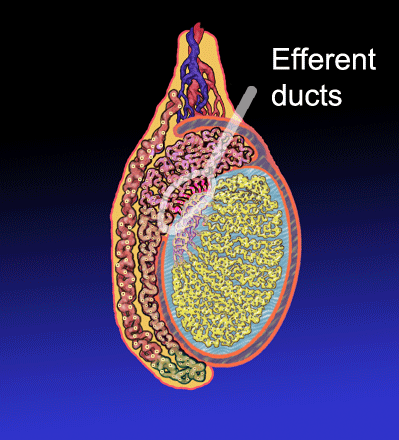Precursor Wolffian duct | Dorlands/Elsevier d_29/12314687 | |
 | ||
Latin Ductus efferentes testis | ||
The efferent ducts (or efferent ductules or ductuli efferentes or ductus efferentes or vasa efferentia) connect the rete testis with the initial section of the epididymis.
There are two basic designs for efferent ductule structure:
The ductuli are unilaminar and composed of columnar ciliated and non-ciliated (absorptive) cells. The ciliated cells serve to stir the luminal fluids, possibly to help ensure homogeneous absorption of water from the fluid produced by the testis, which results in an increase in the concentration of luminal sperm. The epithelium is surrounded by a band of smooth muscle that helps to propel the sperm toward the epididymis.
References
Efferent ducts Wikipedia(Text) CC BY-SA
